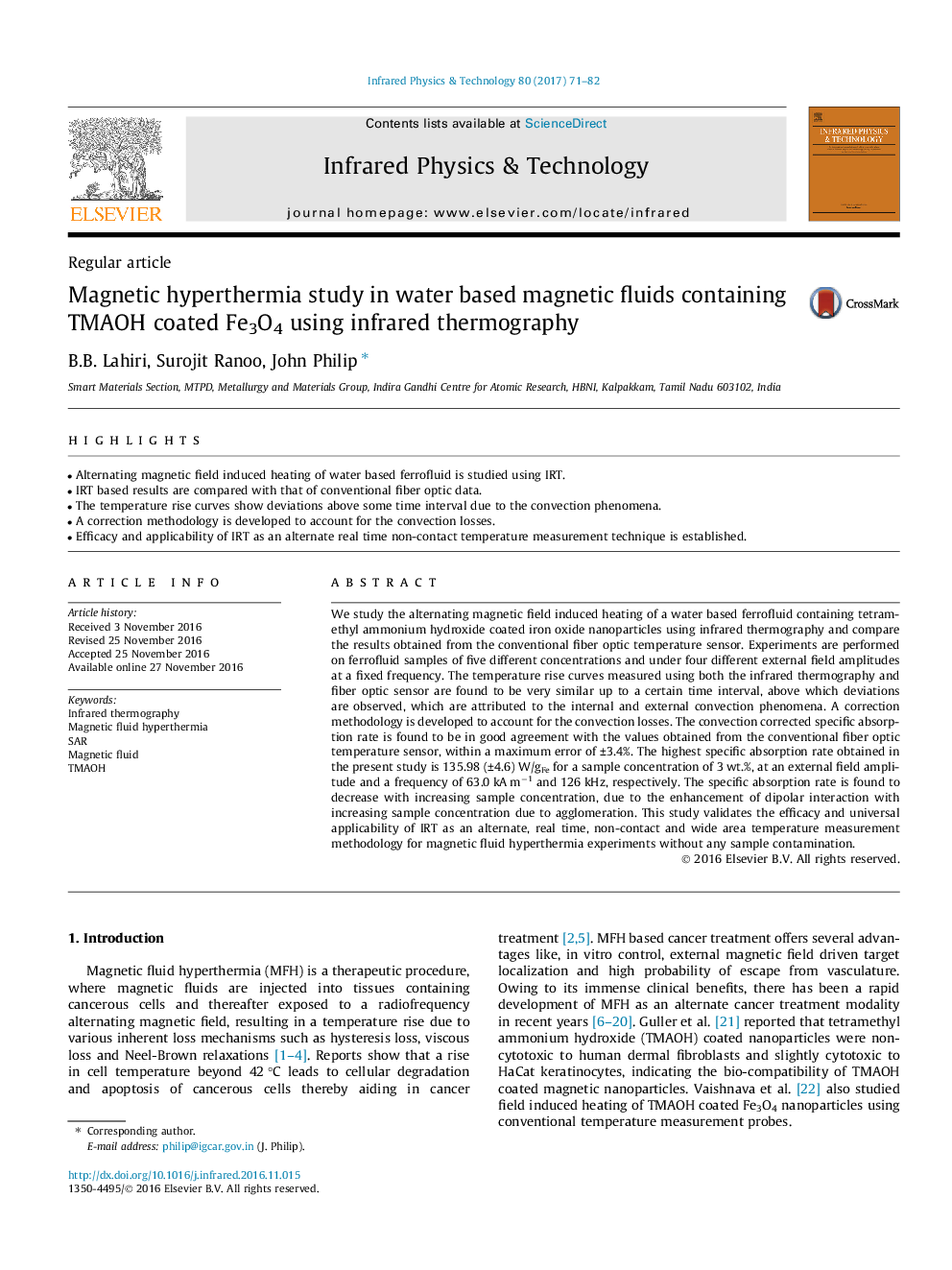| Article ID | Journal | Published Year | Pages | File Type |
|---|---|---|---|---|
| 5488431 | Infrared Physics & Technology | 2017 | 12 Pages |
Abstract
We study the alternating magnetic field induced heating of a water based ferrofluid containing tetramethyl ammonium hydroxide coated iron oxide nanoparticles using infrared thermography and compare the results obtained from the conventional fiber optic temperature sensor. Experiments are performed on ferrofluid samples of five different concentrations and under four different external field amplitudes at a fixed frequency. The temperature rise curves measured using both the infrared thermography and fiber optic sensor are found to be very similar up to a certain time interval, above which deviations are observed, which are attributed to the internal and external convection phenomena. A correction methodology is developed to account for the convection losses. The convection corrected specific absorption rate is found to be in good agreement with the values obtained from the conventional fiber optic temperature sensor, within a maximum error of ±3.4%. The highest specific absorption rate obtained in the present study is 135.98 (±4.6) W/gFe for a sample concentration of 3 wt.%, at an external field amplitude and a frequency of 63.0 kA mâ1 and 126 kHz, respectively. The specific absorption rate is found to decrease with increasing sample concentration, due to the enhancement of dipolar interaction with increasing sample concentration due to agglomeration. This study validates the efficacy and universal applicability of IRT as an alternate, real time, non-contact and wide area temperature measurement methodology for magnetic fluid hyperthermia experiments without any sample contamination.
Related Topics
Physical Sciences and Engineering
Physics and Astronomy
Atomic and Molecular Physics, and Optics
Authors
B.B. Lahiri, Surojit Ranoo, John Philip,
